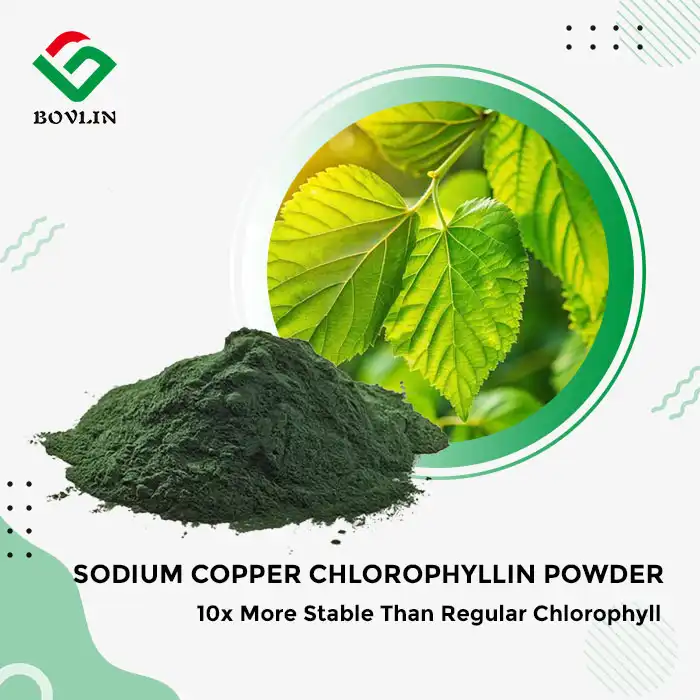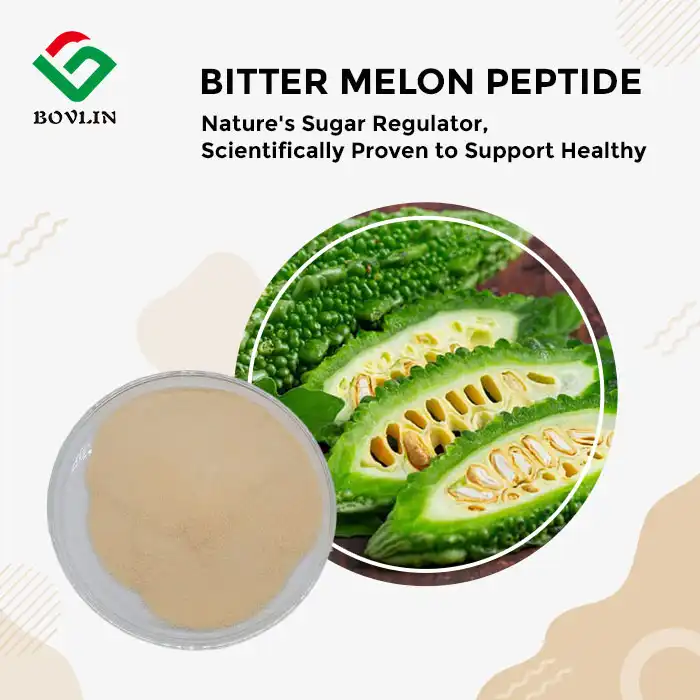How Sea Buckthorn Fruit Powder Promotes Collagen and UV Protection?
The global skincare and nutraceutical industries increasingly demand ingredients that deliver dual benefits: structural skin support and environmental defense. Sea buckthorn fruit powder promotes collagen synthesis and UV protection through its exceptional bioactive composition. This powder contains high concentrations of Vitamin C, a critical cofactor in collagen production, alongside provitamin A carotenoids that support cellular renewal. Its comprehensive omega fatty acid profile - including omega-3, -6, -7, and -9 - nourishes skin cell membranes and supports regeneration. Simultaneously, the dense antioxidant network of flavonoids, polyphenols, and tocopherols neutralizes UV-induced free radicals, thereby reducing photoaging damage. For manufacturers developing ingestible beauty supplements, functional beverages, or topical formulations, this ingredient offers scientifically validated mechanisms for addressing two of the most critical aspects of skin health and aging prevention.
How Do Omega Fatty Acids and Carotenoids Support Skin Regeneration?
Skin regeneration depends on the presence of adequate nutritional building blocks at the cellular level. Sea buckthorn berry powder provides a unique combination of lipids and pigments that directly support the skin's structural integrity and renewal processes. Understanding these components allows manufacturers to develop formulations with targeted efficacy for skin health applications.
The Complete Omega Fatty Acid Complex for Membrane Health
The skin's barrier function and cellular health depend on optimal membrane composition. Sea buckthorn powder delivers all four major omega fatty acid families in bioavailable forms:
- Omega-7 (Palmitoleic Acid): Comprising 20-40% of the lipid fraction, this rare fatty acid is naturally present in skin sebum. It supports epidermal lipid synthesis and barrier repair.
- Omega-3 (Alpha-Linolenic Acid): Provides anti-inflammatory support and modulates skin immune responses. Concentrations typically range from 15-35%.
- Omega-6 (Linoleic Acid): Essential for ceramide synthesis, a critical component of the skin barrier. Content ranges from 5-15%.
- Omega-9 (Oleic Acid): Enhances skin permeability and supports nutrient absorption. Present at 10-25% of total fatty acids.
These fatty acids integrate into cell membranes throughout the body. In skin cells, they maintain membrane fluidity and support cellular signaling. Research shows that omega-7 specifically accelerates wound healing and epithelial tissue regeneration. For manufacturers, this comprehensive omega profile enables formulations that support skin barrier function from within.
Carotenoid Content and Pro-Vitamin A Activity
Sea buckthorn fruit powder is exceptionally rich in carotenoids, giving it a distinctive orange-red color. These pigments provide more than aesthetic value - they deliver critical biological functions:
- Beta-Carotene: A precursor to Vitamin A (retinol), essential for cellular differentiation and epithelial tissue maintenance. Concentrations can reach 10-40 mg/100g.
- Lycopene: Provides potent antioxidant protection and accumulates in skin tissues where it absorbs UV radiation.
- Zeaxanthin: Protects against oxidative stress and supports cellular health.
- Lutein: Filters harmful blue light and reduces photooxidative damage.
The provitamin A activity is particularly valuable for skin applications. Retinol regulates keratinocyte differentiation and promotes normal cell turnover. This prevents the accumulation of damaged cells and supports fresh, healthy skin emergence. Unlike synthetic retinoids, the beta-carotene in sea buckthorn converts to active Vitamin A only as needed. This self-regulating mechanism reduces the risk of excessive accumulation.
Synergistic Action of Lipids and Carotenoids
The true regenerative power of organic sea buckthorn powder lies in the synergy between its fatty acids and carotenoids. This combination offers distinct advantages:
- Enhanced Bioavailability: Carotenoids are lipophilic compounds requiring fat for absorption. The natural fatty acid matrix ensures optimal uptake.
- Membrane Protection: While fatty acids form membrane structure, carotenoids embed within membranes providing antioxidant defense.
- Balanced Inflammation Response: Omega fatty acids modulate inflammatory pathways while carotenoids reduce oxidative triggers of inflammation.
Clinical research demonstrates that this whole-food matrix delivers superior skin benefits compared to isolated compounds. For manufacturers developing beauty-from-within products, this synergy provides a compelling natural alternative to synthetic combinations. The ingredient allows for clean-label formulations with multi-functional benefits.
Stimulating Collagen Synthesis and Reducing Photoaging Signs
Collagen comprises approximately 75% of the skin's dry weight. Its degradation drives visible aging signs including wrinkles, sagging, and loss of elasticity. Sea buckthorn fruit powder addresses collagen health through multiple pathways, making it invaluable for anti-aging formulations targeting both prevention and repair.
Vitamin C as an Essential Collagen Synthesis Cofactor
The collagen synthesis process requires Vitamin C as an absolute cofactor. Without adequate ascorbic acid, the body cannot produce functional, stable collagen. Sea buckthorn powder ranks among nature's richest Vitamin C sources:
- Concentrations range from 200-1,500 mg per 100g depending on variety and processing.
- This represents 4-15 times the Vitamin C content of oranges.
- The vitamin exists in highly bioavailable forms with supporting bioflavonoids.
Vitamin C functions in collagen synthesis through specific biochemical roles:
- Hydroxylation: It serves as a cofactor for prolyl and lysyl hydroxylase enzymes that stabilize the collagen triple helix structure.
- Gene Expression: Ascorbic acid up-regulates collagen gene expression in fibroblasts, increasing collagen production rates.
- Antioxidant Protection: It protects newly synthesized collagen from oxidative damage during assembly.
Research demonstrates that adequate Vitamin C intake directly correlates with skin collagen density. For manufacturers developing collagen-support supplements, this high natural Vitamin C content provides exceptional formulation value. It allows for effective dosing in smaller serving sizes.
Protecting Existing Collagen from Enzymatic Degradation
While stimulating new collagen production is important, protecting existing collagen is equally critical. Sea buckthorn berry powder contains compounds that inhibit collagen-degrading enzymes:
- Matrix Metalloproteinase (MMP) Inhibition: Polyphenols in sea buckthorn, particularly flavonoids, reduce MMP-1 and MMP-3 activity. These enzymes break down collagen and elastin in response to UV exposure and aging.
- Advanced Glycation End-Product (AGE) Prevention: Antioxidants reduce protein glycation, a process that stiffens and degrades collagen fibers.
- Oxidative Stress Reduction: The comprehensive antioxidant profile protects collagen from free radical-mediated cross-linking and fragmentation.
Studies show that sea buckthorn polyphenols can reduce MMP expression by 30-50% in UV-exposed skin cells. This dual action - increasing synthesis while decreasing degradation - creates a favorable environment for collagen accumulation. Manufacturers can position products using this ingredient as comprehensive collagen support solutions addressing both production and preservation.
Clinical Evidence for Skin Elasticity and Firmness Improvement
The collagen-supporting properties of sea buckthorn translate into measurable improvements in skin structure. Clinical trials examining oral supplementation have documented:
- Increased Skin Elasticity: Measurements using cutometry show improvements of 10-15% after 8-12 weeks of supplementation.
- Enhanced Skin Hydration: Corneometer readings indicate better moisture retention, linked to improved dermal structure.
- Reduced Wrinkle Depth: Profilometry analysis shows reductions in fine line depth of 8-12% in some studies.
- Improved Skin Density: Ultrasound measurements indicate increased dermal thickness and density.
These clinical outcomes were achieved with dosages typically ranging from 5-15 grams of sea buckthorn berry material daily. The results demonstrate that sea buckthorn fruit powder delivers tangible, measurable benefits for skin structure. For manufacturers, this clinical evidence supports credible anti-aging and skin health claims. The ingredient enables the development of products with expected consumer-visible results.

UV Protection and Repair Through Natural Antioxidant Pathways
UV radiation represents the single most significant environmental factor in skin aging. It generates massive free radical production, directly damages DNA, and triggers inflammatory cascades. Sea buckthorn powder provides multi-layered protection against UV-induced damage through its dense antioxidant network and cellular repair mechanisms.
Broad-Spectrum Antioxidant Defense Against UV-Induced Free Radicals
UV exposure, particularly UVA radiation, penetrates deep into skin layers generating reactive oxygen species (ROS). Organic sea buckthorn powder counters this oxidative assault through diverse antioxidant mechanisms:
- Vitamin E (Tocopherols): Protects cell membranes from lipid peroxidation. Sea buckthorn contains all four tocopherol forms (α, β, γ, δ) at concentrations of 10-30 mg/100g.
- Vitamin C: Neutralizes aqueous-phase free radicals and regenerates oxidized Vitamin E, creating a synergistic antioxidant cycle.
- Flavonoids (Quercetin, Isorhamnetin): Scavenge hydroxyl radicals and singlet oxygen, among the most damaging ROS species.
- Carotenoids: Quench singlet oxygen and absorb certain UV wavelengths before they generate free radicals.
Research demonstrates that this multi-component antioxidant system provides superior protection compared to single antioxidants. The compounds work in different cellular locations and target different ROS species. For manufacturers developing photoprotection supplements or after-sun formulations, this comprehensive coverage offers significant advantages.
Carotenoid-Based Internal Photoprotection Mechanisms
While topical sunscreens block UV rays externally, internal photoprotection works from within. The carotenoids in sea buckthorn fruit powder provide biological sun protection through specific mechanisms:
- UV Absorption: Carotenoids absorb light in the 400-500nm range (blue and UVA spectrum), reducing the photons reaching cellular targets.
- Singlet Oxygen Quenching: They neutralize singlet oxygen, a highly reactive species generated by UV exposure.
- DNA Protection: Studies show reduced UV-induced DNA damage in cells with higher carotenoid concentrations.
- Erythema Reduction: Clinical trials demonstrate decreased UV-induced redness (sunburn) with carotenoid supplementation.
The photoprotective effects typically require 8-12 weeks of supplementation for carotenoids to accumulate in skin tissues. The protection is modest - equivalent to SPF 2-4 - but complements topical sunscreens. Importantly, it protects areas difficult to cover with topical products. Manufacturers can position this as foundational photoprotection for comprehensive sun defense programs.
DNA Repair Enhancement and Cellular Recovery Support
Beyond preventing UV damage, sea buckthorn berry powder supports cellular repair mechanisms after UV exposure:
- Enhanced DNA Repair Enzymes: Certain compounds upregulate photolyase and other DNA repair enzymes that fix UV-induced thymine dimers.
- Reduced Apoptosis: Antioxidants reduce UV-triggered programmed cell death, allowing damaged cells to repair rather than die.
- Anti-Inflammatory Action: Polyphenols reduce UV-induced inflammatory cytokines (IL-6, TNF-α), minimizing secondary damage from inflammation.
- Immune Function Support: Sea buckthorn nutrients support Langerhans cells and other skin immune cells that become suppressed by UV exposure.
Studies examining cells pre-treated with sea buckthorn extracts show significantly faster recovery after UV exposure. Markers of DNA damage, oxidative stress, and inflammation all return to baseline more quickly. For manufacturers developing recovery or repair-focused products, these mechanisms provide valuable differentiation. Products can be positioned as supporting the skin's natural healing processes after sun exposure.
Conclusion
Sea buckthorn fruit powder delivers comprehensive support for two critical aspects of skin health: collagen production and UV protection. Its exceptionally high Vitamin C content provides essential cofactors for collagen synthesis, while its polyphenols inhibit collagen-degrading enzymes. The complete omega fatty acid profile and provitamin A carotenoids supply fundamental building blocks for skin regeneration. Simultaneously, the dense antioxidant network - including vitamins C and E, flavonoids, and carotenoids - provides multi-layered defense against UV-induced oxidative damage and supports cellular repair mechanisms. For manufacturers developing beauty-from-within supplements, functional foods, or topical formulations, this ingredient offers evidence-based efficacy for anti-aging and photoprotection applications with strong clean-label appeal.

FAQs
What is the optimal dosage for collagen and UV protection benefits in nutraceutical formulations?
Clinical studies demonstrating skin benefits typically employ 5-15 grams of sea buckthorn berry material daily, or equivalent standardized extracts. For concentrated powders, formulators commonly use 1-3 grams per daily serving. The optimal dosage depends on standardization levels and product positioning. Manufacturers should consider conducting bioavailability studies to determine effective doses for their specific formulations and delivery systems.
How long does it typically take to observe measurable improvements in skin parameters?
Most clinical trials show initial improvements in skin hydration and antioxidant status within 4-6 weeks. Visible improvements in elasticity, firmness, and wrinkle reduction typically require 8-12 weeks of consistent supplementation. For internal photoprotection, carotenoid accumulation in skin tissues requires 10-12 weeks. Manufacturers should communicate these realistic timelines to set appropriate expectations for end-users of finished products.
Can sea buckthorn powder be combined with other collagen-supporting ingredients?
Sea buckthorn fruit powder demonstrates excellent synergy with other beauty-from-within ingredients. It combines effectively with hydrolyzed collagen peptides, hyaluronic acid, ceramides, and other skin nutrients. The Vitamin C content enhances collagen peptide absorption and utilization. Formulators should ensure proper stability testing when combining ingredients, particularly regarding moisture-sensitive nutrients.
Partner with Bolin Biotechnology
As a leading manufacturer and trusted supplier of high-purity botanical extracts, Bolin Biotechnology delivers pharmaceutical-grade sea buckthorn fruit powder optimized for skin health applications. Our advanced processing factory preserves the complete spectrum of omega fatty acids, carotenoids, and vitamins essential for collagen support and UV protection. We provide comprehensive technical documentation, standardization options, and formulation support to help you develop innovative beauty-from-within and dermonutrition products. Contact our expert team for detailed specifications, samples, and partnership opportunities at sales1@bovlin.com.
References
Kallio, H., Yang, B., & Peippo, P. (2002). Effects of different origins and harvesting time on vitamin C, tocopherols, and tocotrienols in sea buckthorn (Hippophaë rhamnoides) berries. Journal of Agricultural and Food Chemistry.
Yang, B., Kalimo, K. O., Mattila, L. M., Kallio, S. E., Katajisto, J. K., Peltola, O. J., & Kallio, H. P. (1999). Effects of dietary supplementation with sea buckthorn (Hippophaë rhamnoides) seed and pulp oils on atopic dermatitis. The Journal of Nutritional Biochemistry.
Gęgotek, A., Jastrząb, A., & Skrzydlewska, E. (2017). The effect of sea buckthorn (Hippophae rhamnoides L.) oil on the skin of rats with experimentally induced thermal burns. Molecules.
Pullar, J. M., Carr, A. C., & Vissers, M. C. (2017). The roles of vitamin C in skin health. Nutrients.
Stahl, W., & Sies, H. (2012). β-Carotene and other carotenoids in protection from sunlight. The American Journal of Clinical Nutrition.
Boo, Y. C. (2022). Natural ingredients for anti-aging skincare. Antioxidants.











